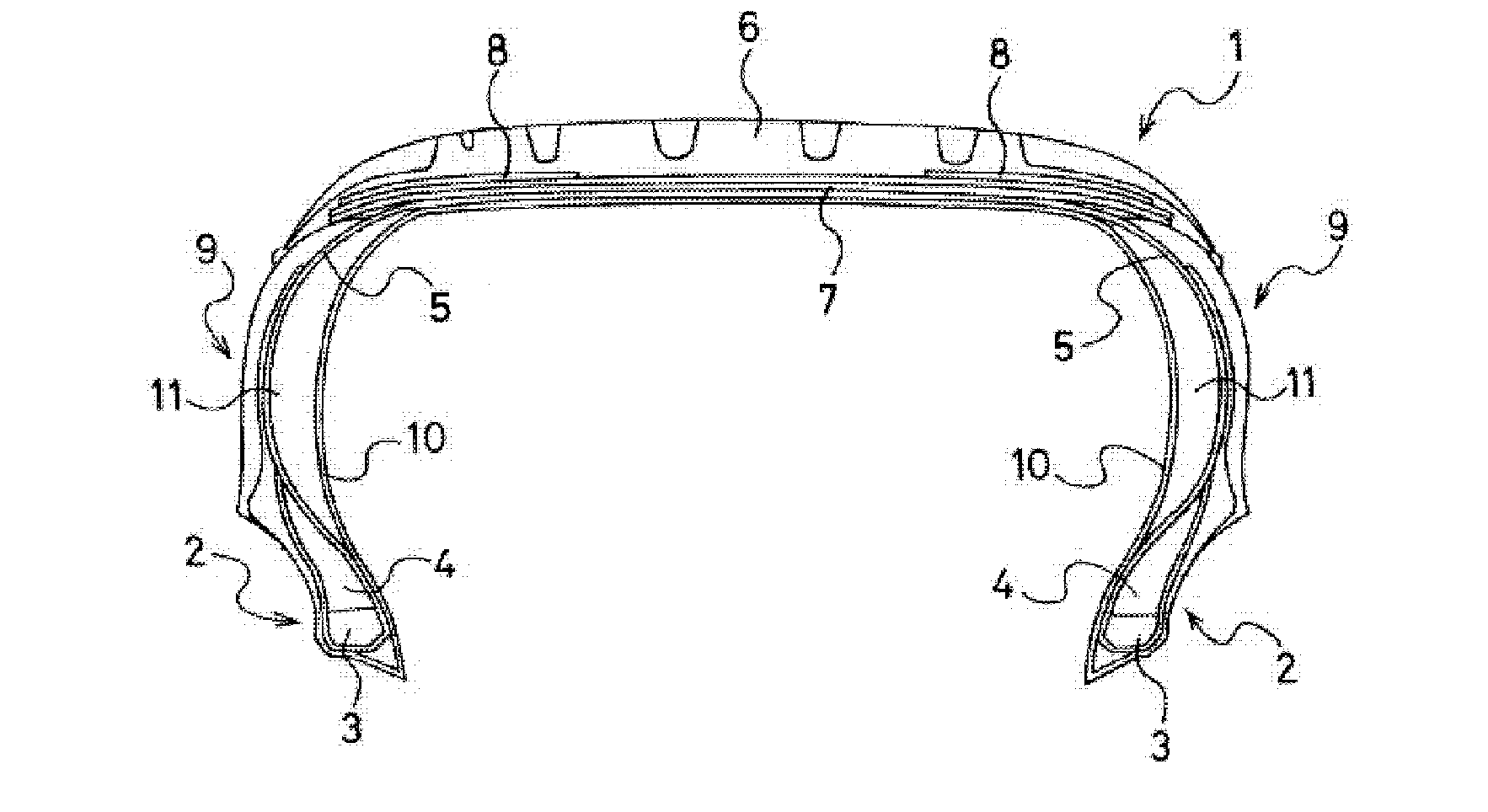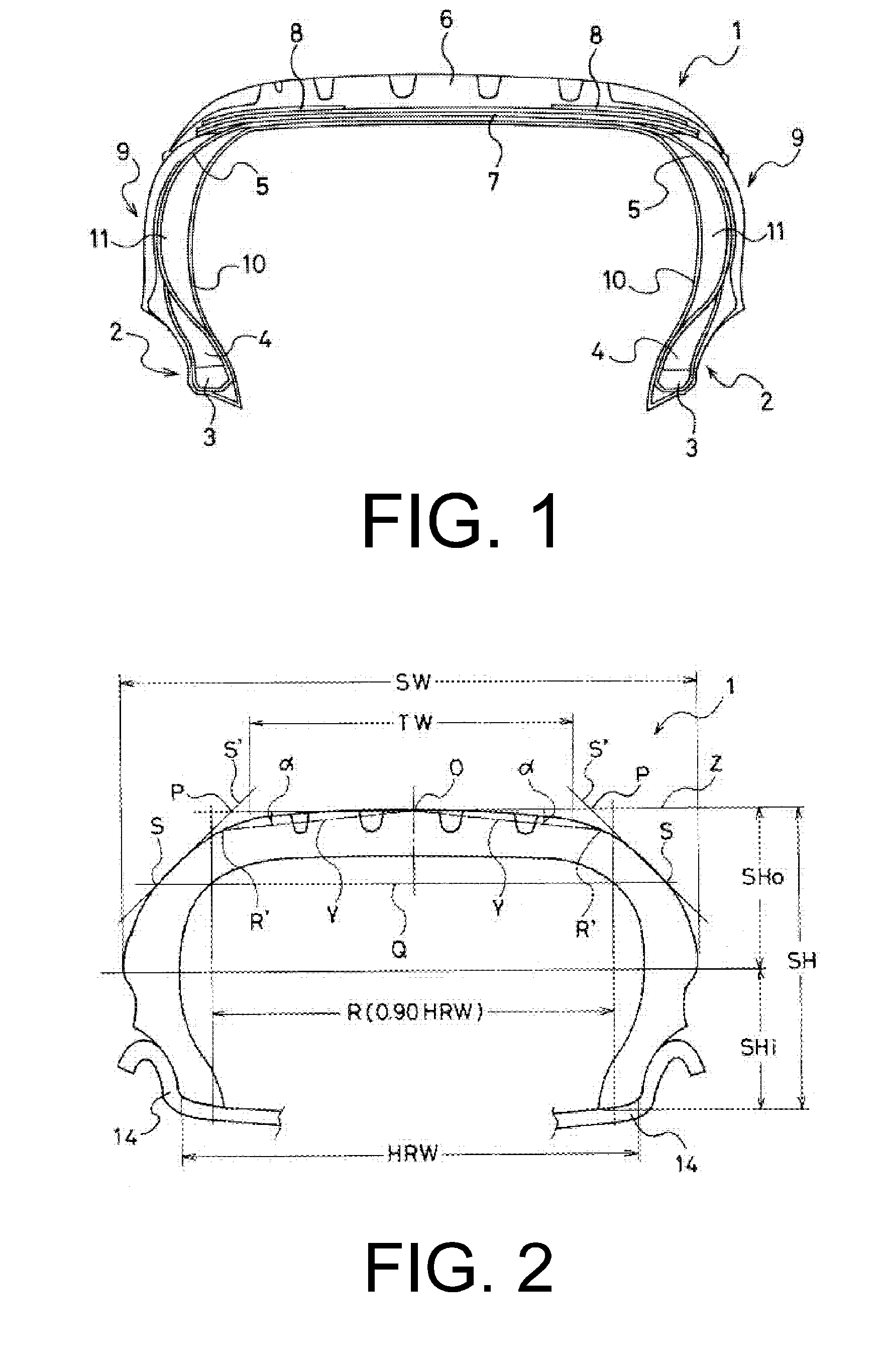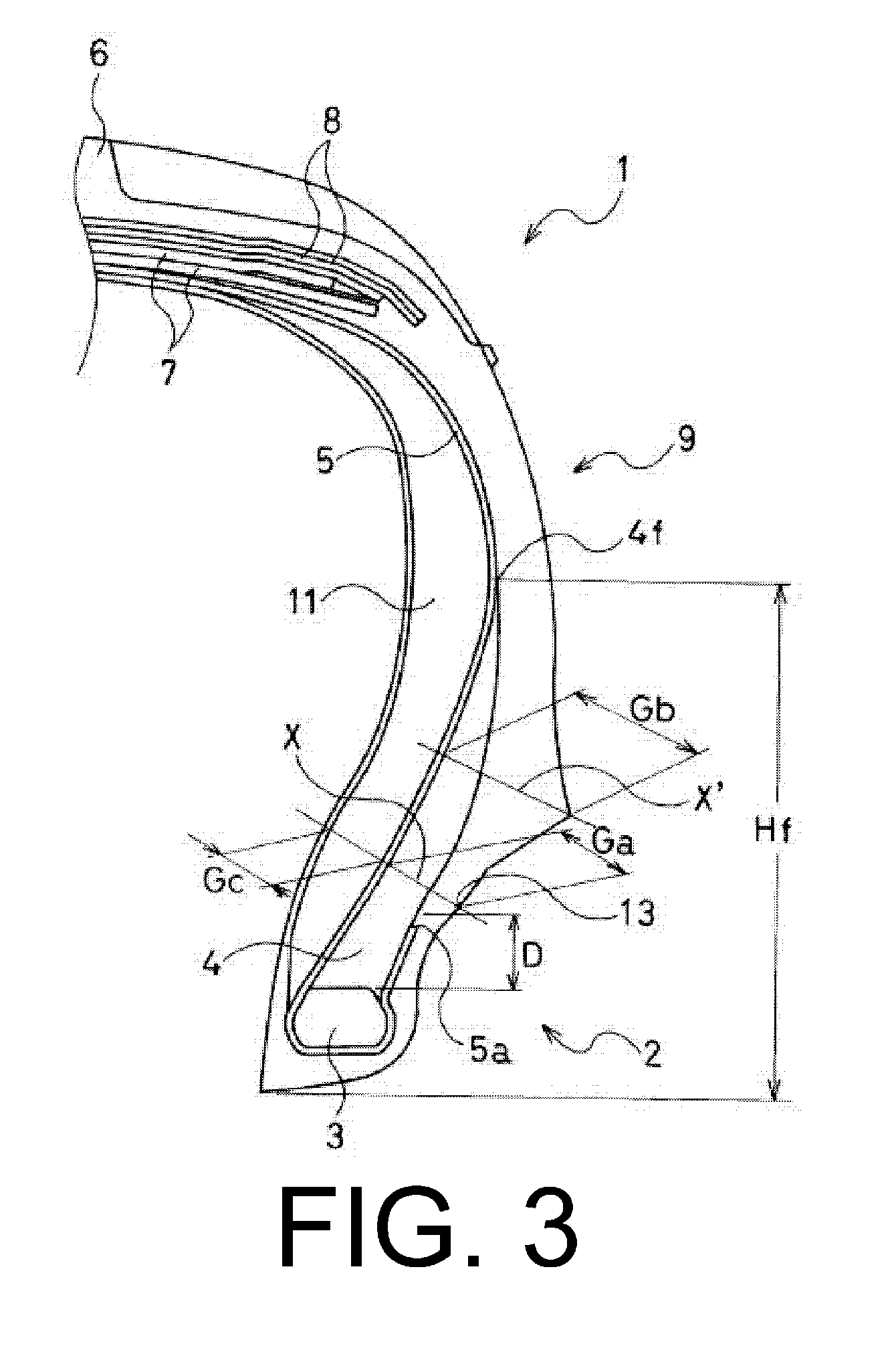Run flat tire
a technology of run-flat tires and treads, which is applied in the direction of pneumatic tyre reinforcements, tire beads, vehicle components, etc., can solve the problems of reducing the durability of run-flat tires, reducing the service life of run-flat tires, and suppressing the buckling of treads, so as to improve the service life and improve the service life. the effect of durability
- Summary
- Abstract
- Description
- Claims
- Application Information
AI Technical Summary
Benefits of technology
Problems solved by technology
Method used
Image
Examples
examples
[0050]A conventional tire (Conventional Example) and present technology tires (Working Examples 1 to 5) were manufactured having a common tire size of 245 / 45R17. A position of the intersection P with respect to the line of demarcation in the region that corresponds to 90% of the rim width (“Intersection P position” in Table 1) after inflation to an air pressure of 180 kPa, an angle α of a straight line Y with respect to the tire axial direction (“Angle α” in Table 1), a distance in the tire radial direction of the folded up end of the carcass layer from the bead core outer peripheral surface (“Carcass folded up end to bead core outer peripheral surface” in Table 1), a height (Hf / SH) of the outer peripheral edge of the bead filler, a ratio of the rubber thickness Ga with respect to the rubber thickness Gb, and a ratio of the rubber thickness Gc with respect to the rubber thickness Ga were each varied as shown in Table 1.
[0051]Note that in each of the tires, rayon fiber cord was used ...
PUM
 Login to View More
Login to View More Abstract
Description
Claims
Application Information
 Login to View More
Login to View More - R&D
- Intellectual Property
- Life Sciences
- Materials
- Tech Scout
- Unparalleled Data Quality
- Higher Quality Content
- 60% Fewer Hallucinations
Browse by: Latest US Patents, China's latest patents, Technical Efficacy Thesaurus, Application Domain, Technology Topic, Popular Technical Reports.
© 2025 PatSnap. All rights reserved.Legal|Privacy policy|Modern Slavery Act Transparency Statement|Sitemap|About US| Contact US: help@patsnap.com



